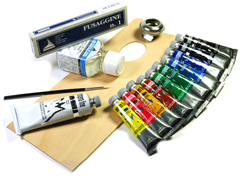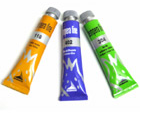
Free coloring pages for kids of all ages
- • A Bug's Life [20]
- • Aladdin [48]
- • Alvin and the Chipmu [15]
- • Angry Birds [31]
- • Animals [458]
- • Baby Boss [17]
- • Barbie [145]
- • batman [54]
- • Ben & Holly's Little Kingdom [25]
- • Big Hero 6 [31]
- • Captain America [33]
- • Captain Underpants [12]
- • Cars [59]
- • Christmas [121]
- • Cinderella [47]
- • Coco [35]
- • Curious George [39]
- • Despicable Me [32]
- • Doc McStuffins [18]
- • Dora the Explorer [70]
- • doraemon [31]
- • Dragons [27]
- • Finding Dory [19]
- • Finding Nemo [23]
- • frozen [41]
- • halloween [56]
- • Hotel Transylvania [18]
- • How to Train Your Dragon [18]
- • Ice Age [68]
- • Insects [96]
- • Inside Out [19]
- • Iron Man [36]
- • Kirby [26]
- • Kung Fu Panda [34]
- • Lego Batman [9]
- • Letters and numbers [220]
- • Masha and the Bear [55]
- • Miraculous [20]
- • Moana [21]
- • Mr Peabody & Sherman [12]
- • My Little Pony [55]
- • Norm of the North [3]
- • PAW Patrol [45]
- • Peppa Pig [59]
- • PJ Masks [23]
- • Regal Academy [11]
- • Shimmer and Shine [26]
- • Sing [17]
- • Skylanders [132]
- • Snow White [21]
- • Sofia the First [17]
- • sonic boom [39]
- • Spiderman [72]
- • SpongeBob [42]
- • Star Wars [40]
- • Super Wings [31]
- • Tangled [21]
- • The Good Dinosaur [99]
- • The LEGO Movie [18]
- • The Little Mermaid [67]
- • The Powerpuff Girls [24]
- • The Secret Life of Pets [32]
- • The Smurfs [52]
- • Trolls [14]
- • Walking with Dinosaurs [5]
- • Yo-kai Watch [37]
- • Zootopia [25]
Coloring with tempera paint

In the past, when you had to paint, the tempera paint was the most practiced, gradually replaced by oil painting.
It has always a great importance from an educational point of view, for its simplicity and practicality of use, for its ability to cover the surfaces and its drying speed. The tempera colors are appreciated because through them we can achieve uniform surfaces, they spread easily and dry quickly. Adhere to any defatted, porous surface, such as paper, cardboard, wood, plaster and terracotta.
We can create uniform layers of color with no signs of brushstrokes. After drying they have a velvety matte appearance. Start with tempera colors when you are inexperienced is a good idea because they are simple to use and also very cheap.
What you need to paint with tempera paints
Basic colors in tubes or jars; in the market there are ready-made boxes (various brands) with the most used colors suitable so for beginners.  A full-size tubes or jars is recommended for the colors that you consume most frequently as white, you need to lighten and soften the tone and the three primary colors, in fact tempera are easily amalgamated, you can then work also with few colors, in addition to black and white to lighten or darken.
A full-size tubes or jars is recommended for the colors that you consume most frequently as white, you need to lighten and soften the tone and the three primary colors, in fact tempera are easily amalgamated, you can then work also with few colors, in addition to black and white to lighten or darken.
The brushes, there are many kinds of them, the soft one or the bristle one. The choice and the size depends on the type of work that must be performed.  To get started are fine also the economic ones, after with more experience, we can also appreciate the more expensive and delicate.
To get started are fine also the economic ones, after with more experience, we can also appreciate the more expensive and delicate.
 A palette, the caps or simple dishes to hold the color and mix it.
A palette, the caps or simple dishes to hold the color and mix it.
Containers for water, one for dilute colors and the other for cleaning brushes. The water must be always clean.
You can paint on many types of surface, almost all types of paper, cardboard, canvas, panel, terra cotta, and many others. If you wish to use the paper this should not be too light to prevent ripples.
Methods to use tempera paints
The main advantage of tempera colors, compared to those for oil, is that these are water based. They are diluted with water and the tools used are cleaned with water. The brushes should be washed well under running water and to get a better result, you can add a bit of mild soap. All this makes the paint easier than other methods of painting.
Adding water the color becomes more liquid and therefore tenuous, if you overdo it you get an effect similar to a watercolor but not transparent. Adding a few of water, color is difficult to apply and drying almost certainly it will chaps (especially if you applied more hands).
Remember to start always painting from the lighter colors, this will make it easier for corrections, dark colors cover more.
The tempera paints dry in a short time, this gives the advantage to make retouching or subsequent drafts without having to wait too long, but also it has the disadvantage of having to fade fast and with decision the colors. It is not appropriate to use this type of color if you want to get delicate nuances or make parts that require long processing times with the color always wet.
Tempera paint is more suitable for uniform color surfaces, drying quickly it is difficult to obtain shades. The only way to create beautiful shades is to work with fresh color and quickly. Give it a try with two colors, quickly roll out a color to the left and other one to the right; where the colors are touching made the rapid transversal strokes, then to finish the feathering you can used a large flat brush slightly moistened. The result will not be the same of the oil paint, but with practice you can get excellent results.
After you have finished painting, you must wash everything with water very well. If traces of color remain on the palette or brushes the next time the new colors will be polluted by the old waste compromising the entire job.
Paintings conservation
To maintain the tempera paint should always be protected with a coat.  To coat a tempera paint, you must first make sure it is completely dry. You can paint with a brush, gently without excessively rub the brush. Alternatively, there are sprays that are very comfortable, they are the same that are used for pencil work or charcoal.
To coat a tempera paint, you must first make sure it is completely dry. You can paint with a brush, gently without excessively rub the brush. Alternatively, there are sprays that are very comfortable, they are the same that are used for pencil work or charcoal.
When the work is completed and dry you must spray on the painting a fixative spray, this will create an invisible protective layer. You must spray the fixative from a distance of about 10 inches, if you do it too close you could create stains or smudges, if you do it too far you would not get the protective effect. To prevent dripping, hold the painting in a horizontal position until the fixative will be well dried. It is advisable to spray a bit of fixative for a time and repeat the operation when just given layer is dried.
After finishing your paintings keep them in a well ventilated area and free of moisture, if it is possible framing them with a protective glass, making sure that this is not in contact with the part painted.
Useful tips
Absolutely not hasten the drying step using the hair dryer. The color almost certainly would create cracks and color begin to peel.
Tempera paint tends to brighten a bit when dry. To see how the colors change after drying should do tests.